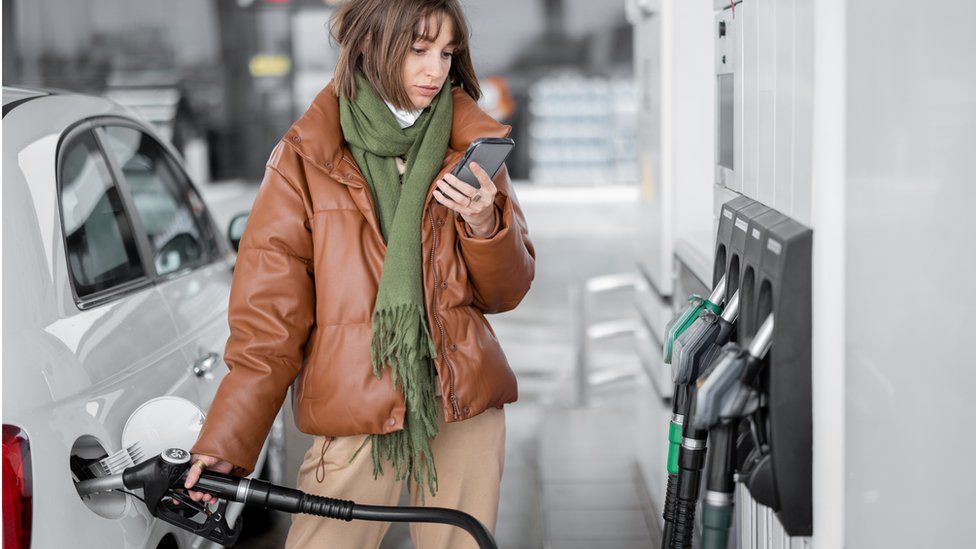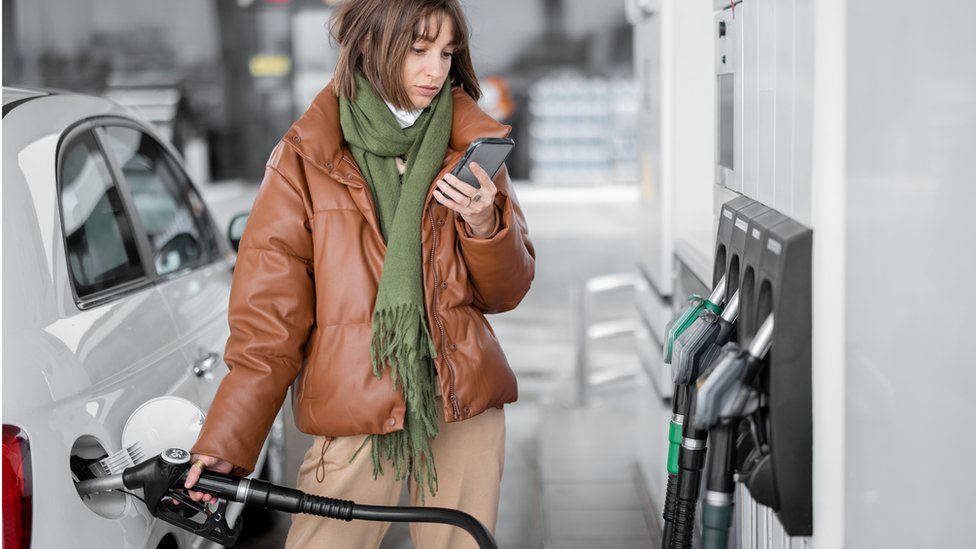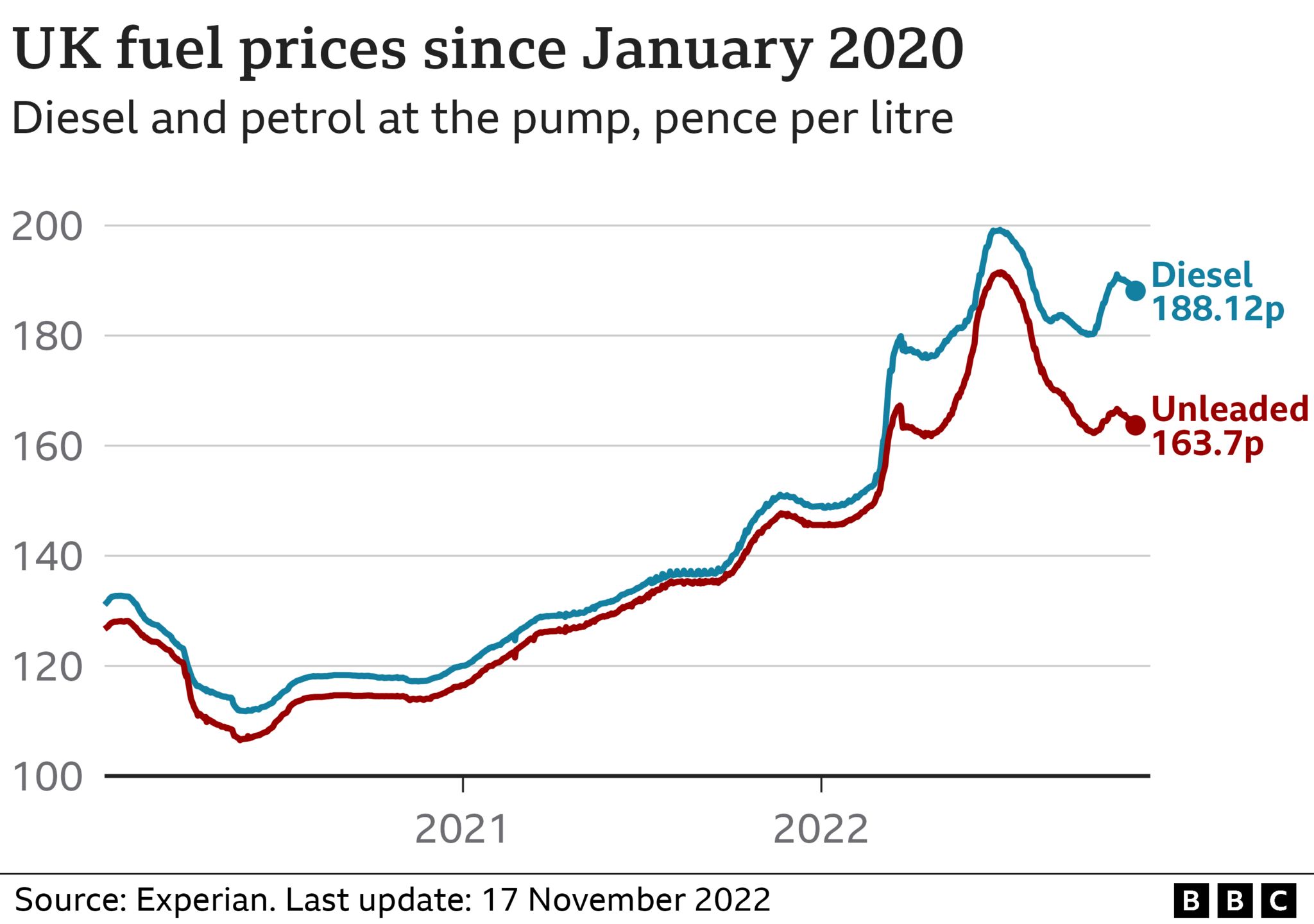Petrol prices: What is fuel duty and is it going up?
Why are UK pump prices at record highs, and when might they fall? …

Published
8 hours ago
 Image source, Getty Images
Image source, Getty ImagesA possible increase in fuel duty would see petrol prices rise by about 12p a litre.
The increase is pencilled in for April 2023, according to the Office for Budget Responsibility (OBR).
How much is fuel duty expected to go up by?
Fuel duty is a tax motorists pay when buying fuels such as petrol and diesel.
It could go up by 23% in April, according to the OBR, which provides independent checks of the government’s economic plans.
That would be “the largest rise in the fuel duty rate in history”, it said.
The 12p per litre rise across petrol and diesel prices would be expected to bring in about £5.7bn in extra taxes.
Will the increase go ahead?
We don’t know yet.
Chancellor Jeremy Hunt said the government has not made a decision to hike fuel duty.
He said that “is not government policy” and that the Treasury would “make a decision on that at the next Budget in the spring”.
Speaking after the fuel duty rise was included in the OBR’s review of the government’s Autumn Statement, he said: “That was just an assumption that the OBR made.”
So, it is still possible the duty could be frozen or go up by a different amount.
What has happened to fuel duty in other years?
In theory, fuel duty should go up every year.
However, in March, Rishi Sunak – who was chancellor at the time – used the government’s Spring Statement to cut the tax, following concerns about rising prices.
Fuel duty on petrol and diesel was reduced by 5p, from 58p to 53p, for 12 months.
The OBR’s statement assumes that 5p cut will end as planned in March.
It has also factored in a scheduled rise of 7p on top of that.
However, chancellors do not always go ahead with increases to fuel duty.
Before Mr Sunak reduced it, the tax had been frozen since 2011.
What does fuel duty pay for?
Fuel duty goes into the government’s general spending pot.
And it’s a big money-spinner, tending to raise about £28bn a year.
The Treasury said the 5p cut introduced in March would cost the public purse £2.4bn in 2022/23.
For 2022-23, the OBR expects fuel duties to raise £26.2bn in total.
There’s also a question mark over how the government will make up the shortfall in the tax as more people start to drive electric cars.
However, the Treasury will also start charging vehicle excise duty on them from 2025.

What is happening to petrol prices?
Petrol and diesel prices have been on a rollercoaster ride this year.
Recent data puts petrol at an average of 164p per litre on UK forecourts.
That’s a few pennies below the level it was at the Spring Statement when fuel duty was cut.
A wide gap has opened up between petrol and diesel, which is now at an average of 188p – about 8p higher than in March.
After the fuel duty cut in March, prices came down a bit – only to shoot up to record highs in the summer.
They then fell back, and are currently on a downward trend.
What do petrol prices have to do with the war in Ukraine?
Fuel prices in the UK move together with changes in the price of crude oil – which it is made from.
They are also affected by the exchange rate between the pound and dollar, as crude oil is traded in dollars. A weaker pound means fuel gets more expensive.
Prices were rising before Russia’s invasion of Ukraine, but the fallout made fuel more expensive.
Russia used to be one of the world’s largest oil exporters, but that was before punishing sanctions were imposed by the West.
The US has banned all imports of Russian oil. The UK is phasing it out, and EU sanctions will block most Russian oil imports after 5 December.



